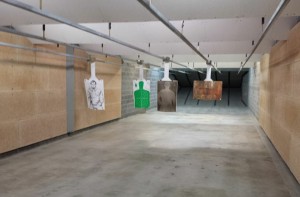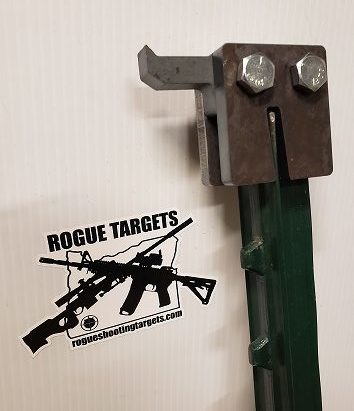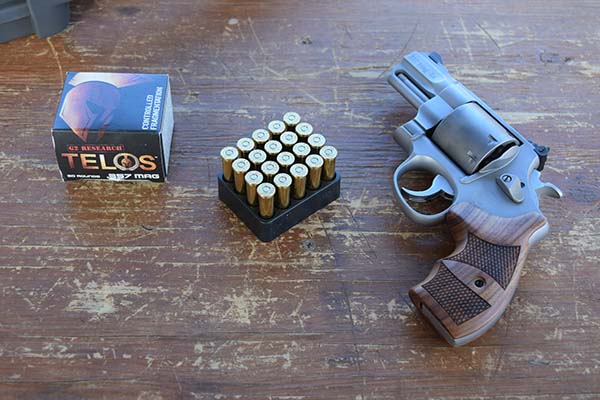
Self defense is possible with a 25 ACP pistol. Many incidents can be solved by simply reaching for a gun, presenting it and firing. You can also hit the pre-employee with something if you feel unsafe. If you need to defend yourself from a corrupt cop, you might consider carrying a.380 and a 22LR. These two calibers are much smaller and lighter than the.25 ACP, but they both have their advantages and disadvantages.
22 LR
There are many benefits to using a 22LR for self defense. Not only does it cost less, but it can be handled easily. It is better than being panicked to be prepared in an emergency. A firearm can be a lifesaver if you find yourself in an emergency situation. How do you select the best handgun for self-defense?
380
You have two options when choosing a self-defense gun: the 9mm or 380 ACP. The 9mm is a more popular choice due to its larger size, lighter weight, better penetration, expansion, and greater penetration. The 380 ACP is lighter and more sensitive to recoil than the 9mm. You may prefer the 380 if you have to conceal the gun in your pocket.

.25 per cent
The FN Baby Browning pistol is small-caliber and weighs in just over 9.5 ounces. This pistol's fascinating history makes it an interesting choice for self defence. You can conceal your gun well hidden by the compact size. These are the benefits of the FN Baby Browning. These are some of these benefits of owning a FN Baby Browning.
FN Baby Browning Chambered in.25 acp
Dieudonne Saive designed the FN Baby Browning, a small semi-automatic pistol with blowback operation. This handgun was designed by John Browning and has a six round magazine as well as a single action striker-fired mechanism. This model comes with a manual thumb safety, which locks in the closed position when engaged with side thumb pressure.
Hollow point bullets
The FBI guidelines for determining maximum penetration depth in 25 ACP ammunition are 12-18 inches, a 10% ordinance block, four layers of denim, and a penetration depth between 12-18 inches. While finding full metal jacket 25 ACP bullets is easy, the same cannot be said for hollow points. Remington UMC and Fiocchi’s 50 grain FMJ loads (both Remington UMC) and Hornady’s35 grain hollow-point offerings (both Hornady) were the best options. Speer Gold dot 35 grain hollow points were also well received.
Reliability
A 25 ACP gun is an excellent choice for self defense. These guns are comparable in price and availability. Both have high stopping power. Both have the same self-defense reliability and are reliable. So which one is best? Here are the facts. You can choose either one. Read on to learn more about the differences and similarities between the two. Below are the benefits of each.

Cost
The 25 ACP pistol has been in existence since 1905. It was designed for small handguns, and it is not as effective at longer ranges. Its propellant capacities and dimensions are extremely small, making it ideal to use for self defense at close range. Its small case means it is not as powerful as a 32 ACP cartridge. However, it is effective enough to save your own life if necessary.
FAQ
Where can a firearm be purchased?
There are many gun shops all over the country. They offer guns ranging from inexpensive starter models to high-end weapons.
Many gun shops are specialists in selling firearms. They often have knowledgeable staff that can help you pick the right gun to suit your needs.
We have a guide for handgun buyers.
Where can I buy a gun? Is it necessary?
Certain species require a gun to hunt.
A firearm is required by most states for hunters. It depends on what game you intend to hunt and where you live.
Any sporting goods store will sell a rifle, shotgun or handgun as well as a crossbow and muzzle loader.
Be sure to select the right weapon for your purposes. You might look at a.22 caliber gun if your goal is to hunt small game such as rabbits, squirrels, and pheasants.
You might consider purchasing a larger caliber weapon if you are planning to hunt large game such as deer, elk and bears.
If you don't feel confident handling a weapon, do not buy it. Guns can be very dangerous. Always keep it unloaded until you are ready to shoot.
Check that the gun has been properly inspected before you purchase it. Ask the seller for instructions on how to load and unload your gun.
Make sure to check the warranty. Ask the dealer if they have a warranty.
Ask the dealer for a copy if their safety instructions. These documents should contain information about safe storage as well as maintenance.
Check the serial number. If the serial number starts with "NIB", it means "New In Box," this indicates that the gun is brand-new.
If the serial numbers start with an odd number then the gun is previously owned.
You can contact the manufacturer directly if you are not sure if the gun has been used. They should be able to tell you more about its history.
What is the cost of becoming a hunter?
Hunting can be expensive depending on where you live.
In some cases, you might only have to pay a small fee to access public lands.
Some states require licenses and permits before you can hunt.
Hunting costs vary depending on what type of firearm you choose. A rifle is usually more expensive than a shotgun.
A license costs between $10 and $50. You may need additional tags depending on how many days you hunt.
You will need a permit in order to hunt certain species. The size of the animal that you want to hunt will determine how much money you have to spend.
Wild turkey hunting can be expensive. You'll need to pay $150 for a tag.
Is hunting dangerous?
Yes, hunting can cause injuries.
There are many ways that you can injure someone else.
One way is through improper shooting techniques. It is possible to shoot at the wrong angle and hit the wrong parts of the animal.
Another risk is being attacked by another animal.
Hunting accidents happen every year. Guns are responsible for many people being killed or seriously hurt.
Hunters are advised to keep their guns loaded until they reach their destination.
They must also ensure their guns aren't loaded before they go into woods.
Always keep your eyes peeled. Watch where you step and listen for sounds.
Do not approach any animals unless you are prepared to defend yourself.
Never chase after prey. Instead, be patient and wait for prey to arrive.
Never take shortcuts. They could result in injury or death.
Be careful around cliffs and other places where you cannot see what's below.
Avoid rivers and streams. These places could flood unintentionally.
When hunting, it is important to avoid alcohol consumption. It can affect your judgment and slow down your reaction times.
All safety equipment should be kept close to your body. You should always have a flashlight and first aid kit.
Knowing how to respond to an emergency is crucial. If you do not know how to perform CPR or administer first aid, find someone who knows how to help you.
Statistics
- According to the Wildlife Restoration Act, passed in 1937, most of the state conservation efforts are funded through hunting and fishing license sales and firearms sales. (stacker.com)
- Indiana, for example, saw a 28% jump in turkey license sales during the first week of the season. (stacker.com)
- Licenses dropped from a peak of roughly 17 million in the 1980s to 15 million in 2019, according to The Seattle Times. (stacker.com)
- Over the past 50 years, the number of hunting licenses in California has been on a rapid decline, falling 70% from more than 760,000 in the 1970s to under 268,000 in 2020—even as the state's population has skyrocketed, according to The Mercury News. (stacker.com)
External Links
How To
How to hunt wild hogs
Wild hogs are large animals found in North America, Africa, Asia, and Europe. Wild hogs can eat small animals and plants, including birds, insects and rabbits. They feed mostly at night. After six months of gestation, one piglet is born. Every two years, a sow will give birth to a piglet. Wild hogs live alone, but sometimes they are part of a group called herds.
Wild boars typically weigh around 200 pounds (90kg). Their head length is between 10 and 12 inches (25-30cm), while their body length is between 20 and 30 inches (50-60cm). Wild pigs have long legs, broad shoulders, and short tails. Their skin is covered with a thick layer fat.
They have a very strong sense of smell, hearing, and sight. These senses help them detect danger and find food. They can run up 35 miles per hour (56 km/h), as well as jump up to 15ft (4m) distances. They have sharp teeth. They are very aggressive when protecting themselves from predators.
Hunting wild Hogs can be difficult as they are agile, intelligent, and elusive. Hunting wild animals requires precision and careful stalking. Hunting too soon can cause the animal to escape. Hunting too early can cause the animal to escape.
There are many ways to hunt wild hogs. The most common is shooting. This involves hunting the animal down and waiting for it to come within range. Trapping is another method. Setting traps near water sources is another method of trapping. The traps are often equipped with a scent lure that includes peanut butter mixed with corn meal. The hunter then shoots the trapped pork after the trap has been sprung.
Another method is snaring. Snaring uses a noose made out of rope to catch the pig. It is most effective if the pigs are caught in its mating period.
Other methods include netting, spearing, and poisoning. Netting and spearing involve placing a net or spear through the pig's neck to stop its breathing. Poisoning refers to injecting poison in the pig's neck.
Hunters who wish to hunt wild hogs need to be prepared for the cold weather. Hunting in colder areas may require the use of snowshoes. Some hunters bring dogs with them to help them track the animals.